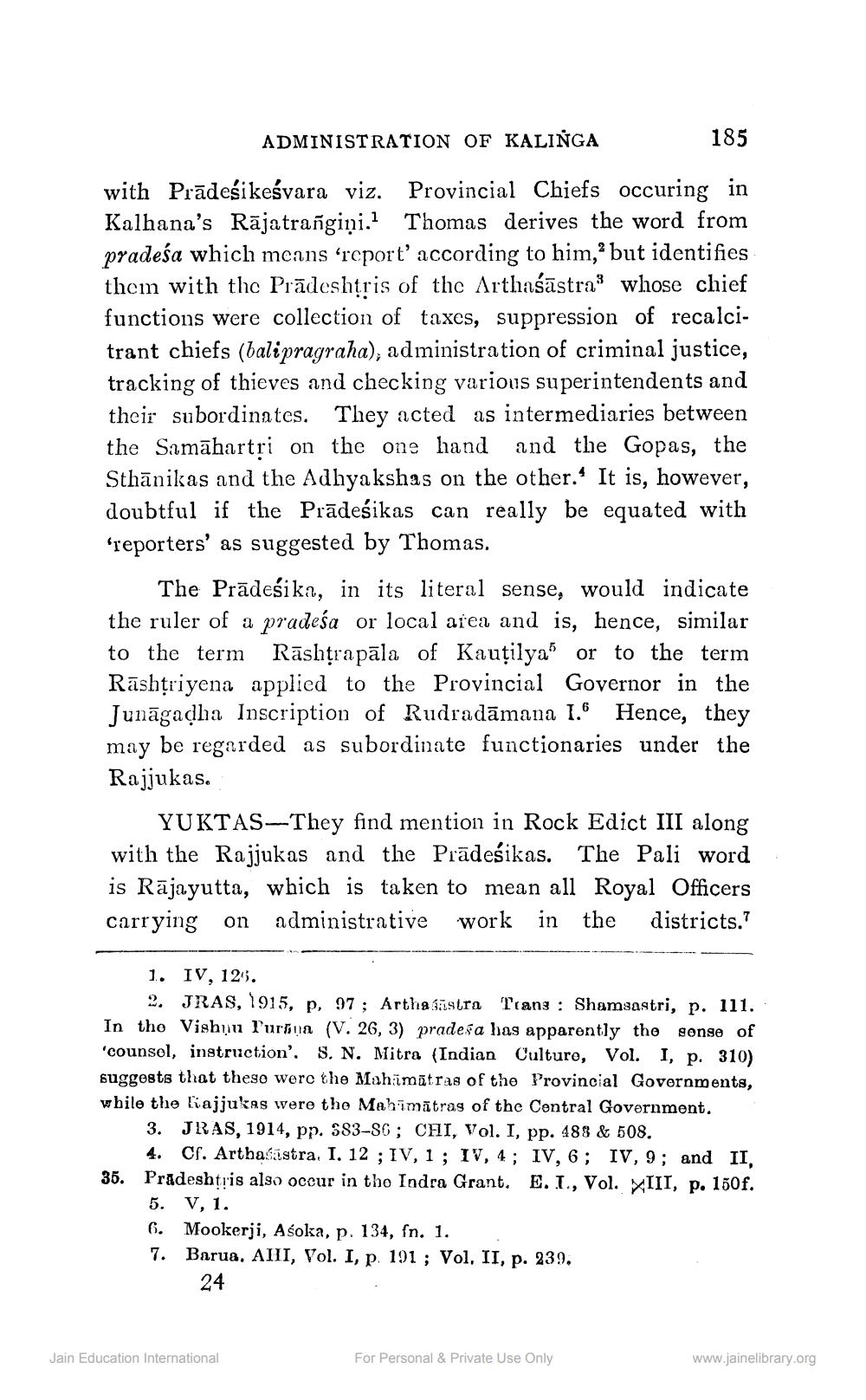________________
ADMINISTRATION OF KALINGA 185 with Prādeśikeśvara viz. Provincial Chiefs occuring in Kalhana's Rājatrangini. Thomas derives the word from pradeśa which means “report' according to him, but identifies them with the Prādeshtris of the Arthaśāstra? whose chief functions were collection of taxes, suppression of recalcitrant chiefs (bali pragraha), administration of criminal justice, tracking of thieves and checking various superintendents and their subordinates. They acted as intermediaries between the Samāhartři on the one hand and the Gopas, the Sthānikas and the Adhyakshas on the other.' It is, however, doubtful if the Prādeśikas can really be equated with “reporters' as suggested by Thomas.
The Prādeśika, in its literal sense, would indicate the ruler of a pradeśa or local area and is, hence, similar to the term Rāshțrapāla of Kautilya" or to the term Rashtriyena applied to the Provincial Governor in the Junāgadha Inscription of Rudradāmana 1.6 Hence, they may be regarded as subordinate functionaries under the Rajjukas.
YUKTAS–They find mention in Rock Edict III along with the Rajjukas and the Prādesikas. The Pali word is Rājayutta, which is taken to mean all Royal Officers carrying on administrative work in the districts.?
1. IV, 125.
2. JRAS, 1915, p. 97; Artha sastra Trang : Shamsastri, p. 111. - In tho Vishnu l'urna (V. 26, 3) pradera has apparently the sense of 'counsel, instruction'. S. N. Mitra (Indian Culture, Vol. I, p. 310) suggests that these were the Mahimītras of the Provincial Governments, while the liajjukas were the Mahīmātras of the Central Government.
3. JRAS, 1914, pp. 583-36; CHI, Vol. I, pp. 488 & 508.
4. Cr. Arthasastra. I. 12 ; IV, 1 ; IV, 4; IV, 6; IV, 9; and II, 35. Pradeshtris also occur in the Indra Grant. E.L., Vol. III, p. 150f.
5. V, 1. 6. Mookerji, Asoka, p. 134, fn. 1. 7. Barua. AHI, Vol. I, p. 191 ; Vol. II, p. 239.
24
Jain Education International
For Personal & Private Use Only
www.jainelibrary.org




